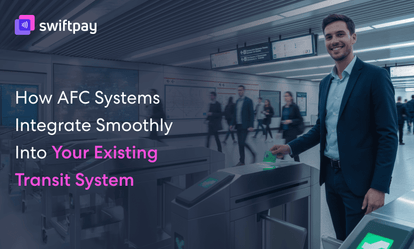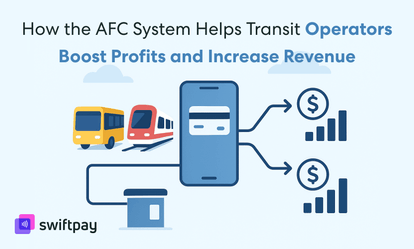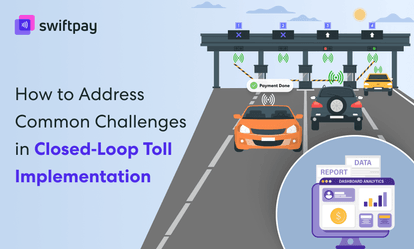Your best customers are worth 10 times more than your average ones. Yet most businesses spend their energy chasing new customers instead of keeping the ones they already have.
And customers don’t stay loyal because of rewards, or deals, or discounts.
They stay loyal because it’s easier, faster, and more personal to keep coming back than to go elsewhere.
Loyalty programs and closed-loop payments are used by many businesses to retain customers. And they are effective; there’s no doubt about that.
But often, they are confused. And many businesses think they’re the same thing. They are not.
That’s why it’s crucial for businesses like yours, especially if you’re wanting to boost customer loyalty and retention, to understand the difference between the two.
If you are among those businesses, then you’re at the right place.
This blog breaks down the difference between closed-loop payments and loyalty programs.
Bonus: You will also know the benefits of combining both.
Let’s begin.
What are closed-loop payments?
A closed-loop payment is a payment method that only works within your business (or network of businesses).
Think of a branded gift card, an app-based payment wallet, or a reloadable account. These types of payments are commonly used in retail stores, cafés/restaurants, or hotels.
The following analogy from one of our previous blogs is perhaps the best way to understand closed-loop payments:
“A closed-loop payment system is like having a special TV streaming service subscription - think of it as Netflix. Now you know that Netflix shows only work on Netflix; you can't watch Netflix shows on cable TV. So, similarly, closed-loop wallets or cards only work within their own specific system. For example, you can't use Starbucks app money at McDonald's.”
So, unlike open-loop payments (bank cards, mobile wallets, etc.), closed-loop systems give businesses like yours full control over the transaction, the transaction data, and the relationship.
Besides, you don’t have to pay third-party processing fees. You don’t lose insight into someone else’s platform. You don’t get stuck with generic user data.
You own and control the entire experience, from payment to reward to re-engagement.
What are loyalty programs?
Loyalty programs reward customers for sticking around.
It is a way that businesses like yours reward customers who keep coming back and shop at your store.
When a customer joins a loyalty program, he/she usually give your business their information and gets a special card or account.
So, every time they make a purchase, they earn points, get discounts, or receive other special offers.
Loyalty programs help businesses like yours keep their customers happy and encourage them to return. Plus, they also help you learn more about what your customers like to buy.
But loyalty programs can be as simple or complex as you want them to be. Some are digital. Some are card-based. Some tie into apps or online platforms. Some even stretch across partner brands.
The goal is always the same: encourage customers to come back by offering something of value in return.
What is the difference between closed-loop payments and loyalty programs
Understanding the difference between closed-loop payments and loyalty programs is crucial for business owners like yourself. Why?
It’s because they are often confused or mixed up. There are, no doubt, certain overlaps between the two. But still, they are different concepts.
Let’s break it down:
Closed-loop payments solve operational challenges. They help you with:
- Faster transactions (no waiting for bank or third-party card authorization)
- Lower processing costs (you avoid third-party fees)
- Better cash flow (customers prepay, giving you money upfront)
- Enhanced security (transactions stay within your controlled network)
Loyalty programs solve marketing challenges. They help you:
- Increase visit frequency through rewards
- Gather customer data for targeted marketing
- Create an emotional connection to your brand
- Encourage higher spending through tier benefits
The table below presents a side-by-side comparison between closed-loop payment systems and loyalty programs:
| Parameter | Closed-Loop Payment Systems | Loyalty Programs |
|---|---|---|
| Primary Purpose | Limit the spending within your business or network | Reward customer behavior to drive repeat visits |
| Payment Flexibility | Customers must use your specific payment method | Works with any payment method (cash, credit, etc.) |
| Money Flow | Customers prepay/load money upfront | Customers pay at the time of purchase |
| Transaction Speed | Faster (no external authorization needed) | Same speed as regular transactions |
| Processing Costs | Lower (reduced third-party fees) | No cost, as customers are just redeeming points or rewards |
| Data Collection | Automatic transaction tracking within your system | Requires customer identification at purchase |
| Customer Commitment | High (because money is already loaded) | Variable (depends on reward structure) |
| Revenue Impact | Immediate cash flow improvement | Long-term customer lifetime value |
| Best For | Any businesses with frequent & small transactions | Businesses that want to increase repeat customers |
| Examples | Starbucks app, Target RedCard, arcade tokens, etc. | Airline miles, grocery store points, hotel rewards |
Disadvantages of using loyalty and payments separately
Using separate systems for payments and loyalty might seem harmless at first.
But over time, the disconnect starts to create cracks, both in the customer experience and in your business operations. Here's where it goes wrong:
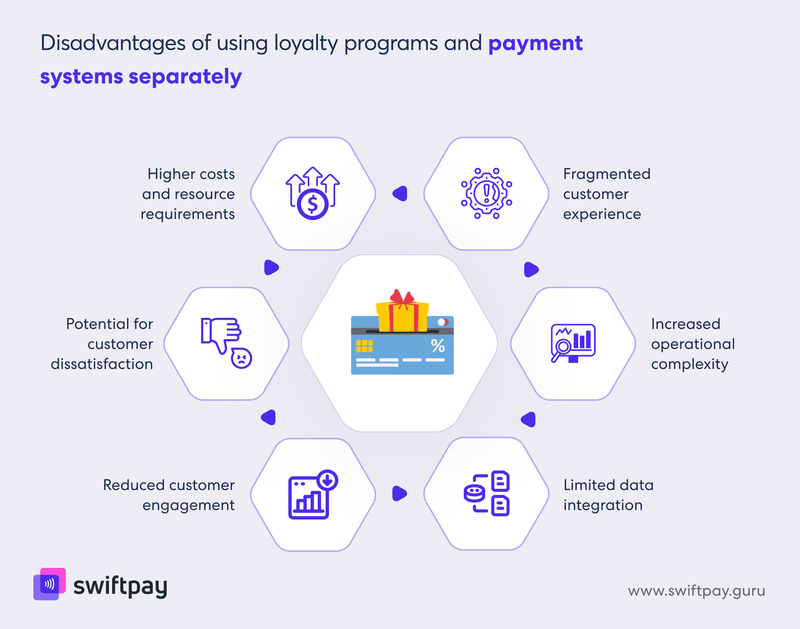
Fragmented customer experience
When your customers pay in one system and earn rewards in another, the journey feels disjointed.
You are basically forcing them to jump between apps, scan separate cards, or manually link transactions to loyalty accounts. This added effort disrupts what should be a smooth and satisfying interaction.
And in a world where speed and ease matter, any friction becomes a reason to churn.
Increased operational complexity
Every standalone system requires onboarding, integration, support, and updates.
Now, multiply that by two or more, and your team ends up managing multiple vendors, contracts, and backend platforms that are not integrated.
This disconnect eats up your time and resources. Plus, it also increases the chances of technical issues and inconsistent customer experiences.
Limited data integration
When payment and loyalty systems operate in isolation, your data lives in silos. That means you can’t easily connect the dots between purchases and behavior.
You might know what someone bought, but you can’t know what motivated them. Or let’s say you know who’s using your loyalty program, but not how often they actually spend.
Without unified and streamlined insights, personalizing experiences and identifying patterns is just a guessing game.
Reduced customer engagement
If customers can’t instantly see the value of engaging with your loyalty program—or worse, forget it exists—it loses impact.
Delayed rewards, unclear redemption processes, or lack of real-time feedback—all these contribute to lower participation and decreased retention.
The best loyalty programs are those that are integrated into the customer’s everyday experience.
Potential for customer dissatisfaction
Poor syncing between customer loyalty programs and payment systems can lead to a wide range of issues: missing points, incorrect balances, or failed redemptions at checkout.
These small frustrations slowly erode trust and make your brand feel unreliable.
Customers won’t take the time to fix what you broke. They’ll just stop using it.
Higher costs and resource requirements
Running two systems separately means double the setup, maintenance, and support.
And if you’re relying on third-party platforms that charge per transaction or per user, costs can rise quickly. If you are not getting proper returns, then it’s a problem.
It’s an expensive way to deliver a disjointed experience.
Benefits of combining closed-loop payments and loyalty programs
When you combine how customers pay with how they’re rewarded, you eliminate the gaps.
With that, every interaction becomes part of a cohesive and rewarding loop, which benefits both your customers and your business.
Here’s how the two work better together:
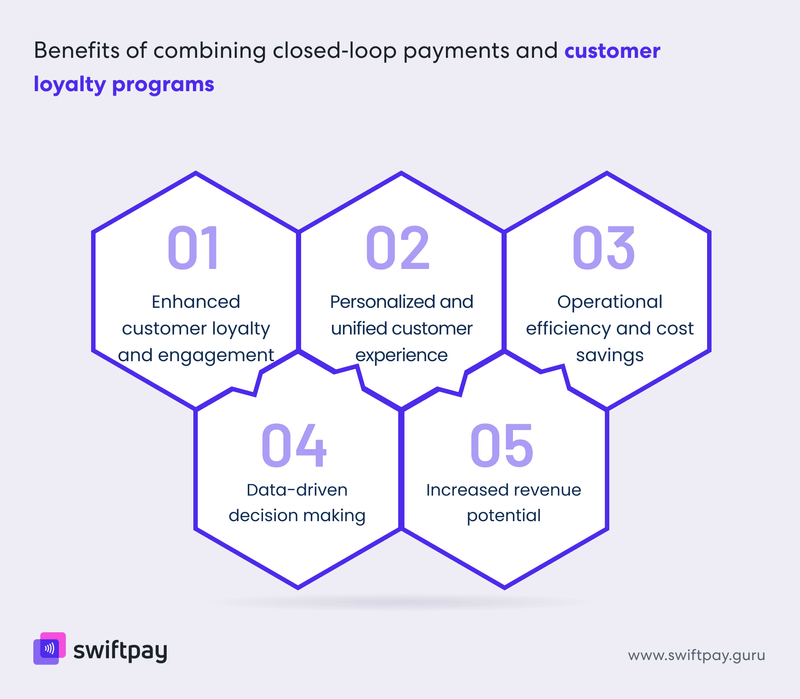
Enhanced customer loyalty and engagement
When reward programs are directly tied to payments, customers receive immediate recognition for their purchases.
Hence, every time they use your branded payment method (closed-loop prepaid card or an e-wallet app), they’re also progressing toward a reward automatically.
This instant feedback loop reinforces the habit of choosing you, not a competitor. Over time, convenience and value combine to build loyalty that doesn’t rely on gimmicks or one-time incentives.
Personalized and unified customer experience
When payments and customer loyalty programs run through the same system, everything feels seamless to your customer.
There’s no need for multiple logins, separate loyalty cards, or manual claims.
Besides, because the system knows their preferences, visit history, and purchase patterns, you can offer tailored experiences and rewards that actually resonate with them.
That kind of personalization is what turns casual customers into brand advocates.
Operational efficiency and cost savings
Managing a single and integrated platform means less complexity behind the scenes.
That also means your team spends less time troubleshooting disconnected systems and more time on customer service and satisfaction.
You also reduce costs associated with third-party payment processors and loyalty platforms.
Data-driven decision making
Integrated systems give you a 360° view of each customer. From how often they visit, to what they buy, to how they engage with your offers.
This unified data and insights enable more accurate segmentation, smarter targeting, and faster iterations.
That means you can measure what’s working (and also what’s not), then adjust your promotions, pricing, and communication based on real behavior, not assumptions.
It’s not just better data. It’s actionable intelligence.
Increased revenue potential
When customers are rewarded every time they pay, they’re more likely to spend more, return sooner, and stick around longer.
As the closed-loop payment systems give you full control over pricing, promotions, and margins, you can run more effective campaigns without giving away more than you need to.
You’re not just earning revenue; you’re doing it efficiently, with repeatable behaviors and measurable returns.
Read more - How to Build Brand Loyalty with Closed-Loop Wallets
Final Thoughts: Loyalty is earned. But it can be designed.
Most businesses chase loyalty by throwing more offers into the void. But loyalty can’t be bought. It’s built.
Combining closed-loop payments and loyalty programs is among the most effective customer retention strategies. It’s because they both complement each other very well.
When it's done right, your closed-loop payment system becomes the vehicle for delivering loyalty benefits seamlessly.
You create a system where your customers keep coming back not just because of a reward, but because it’s easier, smarter, and more familiar to stay with you than to leave.
Hence, it’s not about locking them in. It’s about removing reasons to leave as well.
At SwiftPay, we help businesses like yours achieve that kind of customer loyalty and retention.
With our closed-loop payment solution, you get your own dedicated payment platform along with loyalty features.
Our solution unites payments and rewards in one seamless platform. No guesswork. No fragmentation. Just smarter tools to help you keep your customers you’ve already earned.
Because in the end, it’s not about more transactions. It’s about better ones.


